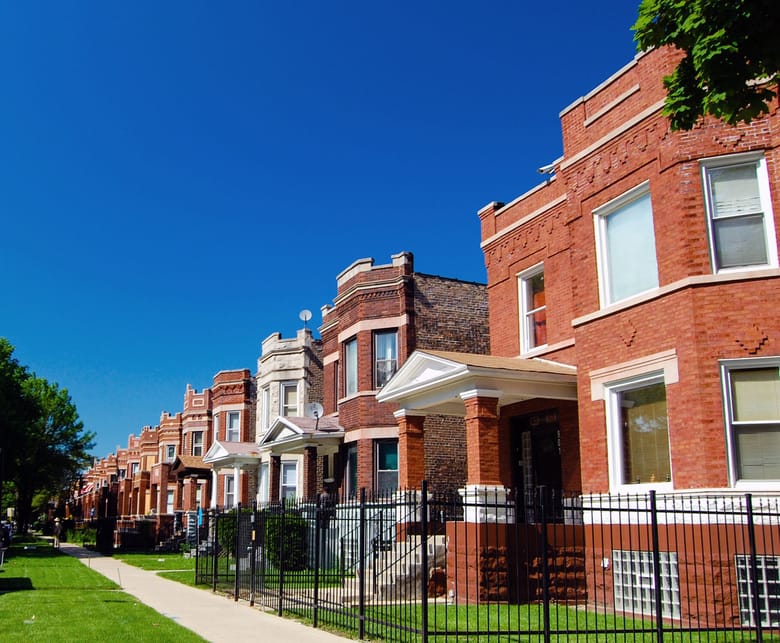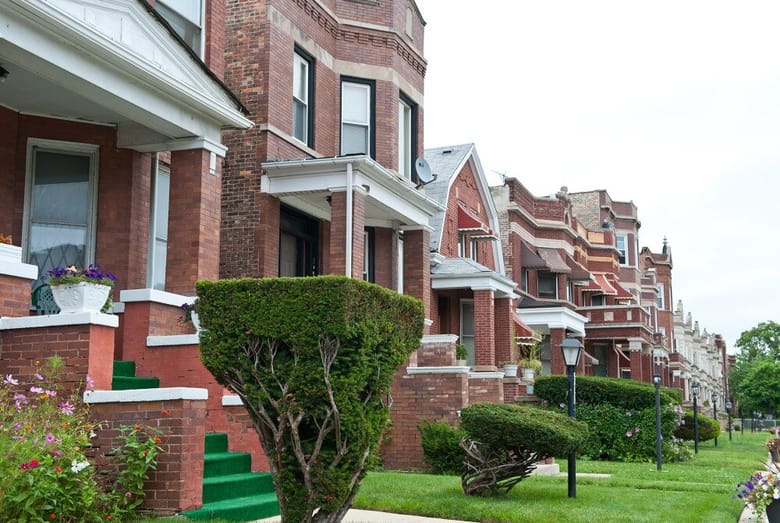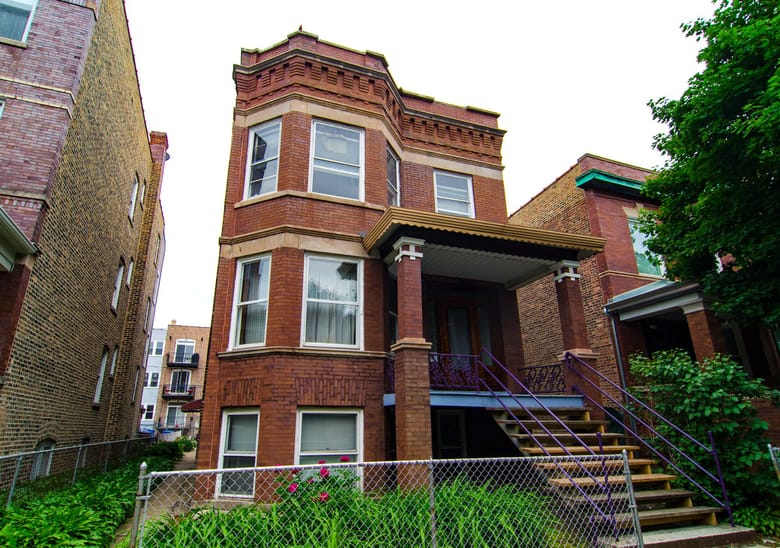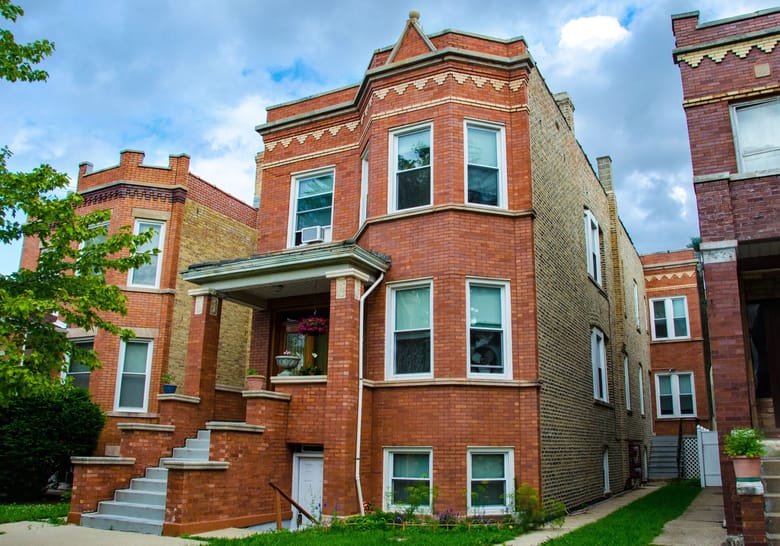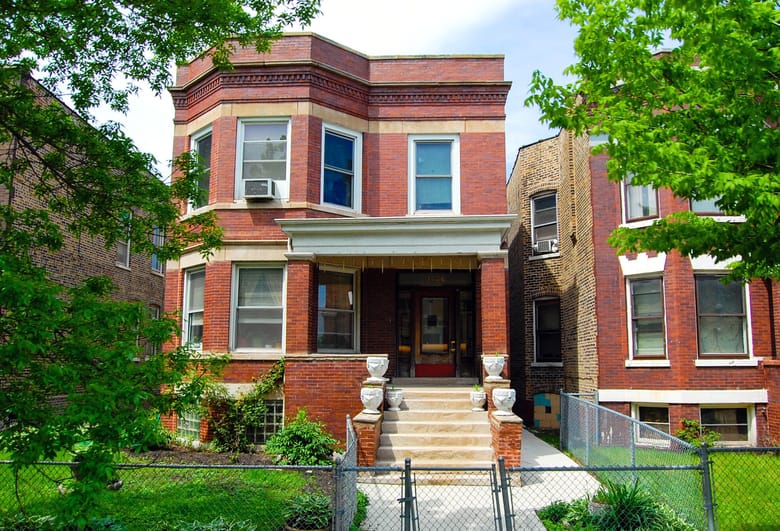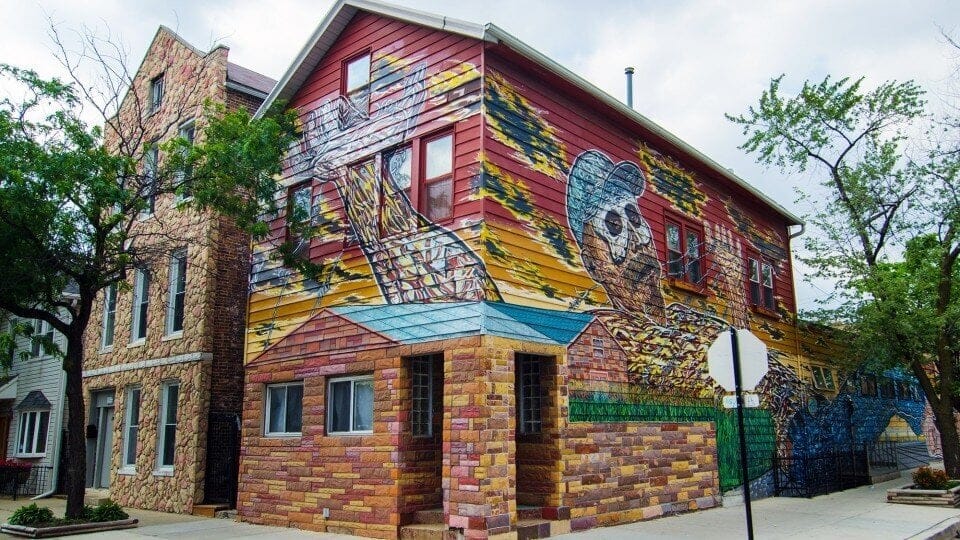Two- and Three-flats
There’s an intermediate step between Chicago’s iconic skyscrapers and the instantly-recognizable bungalows that surround them.
Photo by Eric Allix Rogers
Photo by Eric Allix Rogers
Photo by Eric Allix Rogers
Photo by Eric Allix Rogers
Two- and three-flat apartment buildings make up a quarter of Chicago’s housing. The story of how that came to be is intimately tied to Chicago’s immigrant past—and to the American dream that those immigrants were chasing.
IMMIGRANTS ON THE UPSWING
Chicago is famously a city of immigrants chasing brighter economic futures. But often, upon arriving here, those immigrants found themselves packed into teeming tenements in worn-out neighborhoods near industrial areas. These tight-knit communities may not have been pleasant, but they were stepping-stones (and invaluable support networks) on the way toward greater prosperity.
While broadly similar stories played out among many immigrant ethnic groups, the Bohemians loom especially large in the evolution of Chicago’s housing stock. Their port of entry was the dense neighborhood they called Pilsen (after Plzen, in today’s Czech Republic). A young immigrant who had arrived there in the 1890s might, through luck and hard work, build enough wealth to buy a two-flat in a less dense neighborhood like North Lawndale in the 1910s or 1920s.
PALAZZOS FOR THE PEOPLE
Chicago’s two-flats, like Brooklyn brownstones or the row houses of Philadelphia, are often found in impressive ensembles—like North Lawndale’s K-Town. They have a distinctive Italianate style, inspired by the Palazzo Medici in Florence. Facades in brick or stone typically feature an entry porch to one side, and a projecting bay of windows on the other, all surmounted by a more or less ornate cornice in brick or stone. Postage-stamp front yards connect to narrow gangways between the closely-spaced buildings.
Buying a two-flat didn’t just mean more breathing room and more pleasant living conditions. They were always intended as wealth-building investments. Rental income could cover the mortgage and provide a degree of economic security. Bohemians lead the way in building two-flats, for themselves and speculatively for sale to others. Plans and building materials could even be purchased as kits.
STEPPING STONES
These financial workhorses helped build Chicago’s famed bungalow belt. Our typical Bohemian immigrant often traded up in the 1920s or 1930s to a bungalow in a place like Berwyn or Cicero—thus realizing the American dream of a detached house with a yard. This pattern repeated itself all over the city. The aspirations of Chicago’s immigrants left a tangible architectural legacy.
Did you know?
Two-flats are the most common, but three-flats are easily found, and some developers doubled designs to build four- or six-flats.
Did you know?
There are more than 76,000 two-unit apartment buildings in Chicago.
Did you know?
Two-flats are no longer being constructed by developers, who consider them impractical to build.

